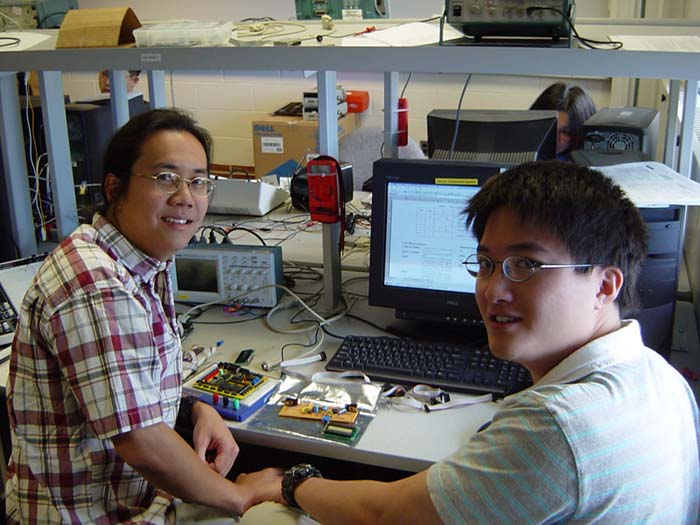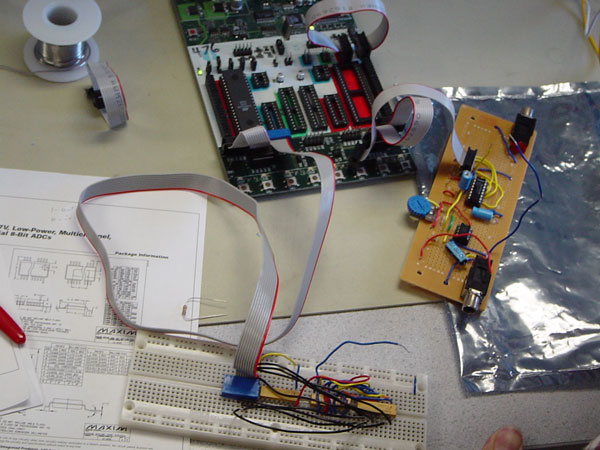![]()
![]()
![]()
As you can see from the title, our project, in a nutshell, is a Sound Effects
Processor (for the lack of a better name), which is capable of taking an audio
input, adding effects to it digitally and passing an analog output to an amplifier.

Fig 1. Joel(left)
and Jeremy(right), the architects of
The Sound Effects Processor taking
a well deserved break.
For this endeavour, we first built an input stage that will amplify the input signal, as well as bias it to 2.5V (since the ADC can only sample positive signals). The ADC (MAX1111) is controlled by the microprocessor (Mega 32) using the SPI interface which was much easier than manually configuring a port to interface with the ADC(believe me, we tried that). We set the Mega 32 to sample the input at about 12 KHz which is fast enough to meet the Nyquist requirement for analog to digital sampling. The digital effects were done using by manipulating the input (which will be discussed in the Design page) and the output is passed to a R-2R DAC to a output amplifier stage and finally, to the speaker.

Fig 2. A
photo of our input and output analog stages. The DAC is on the left while the
ADC is to the right.